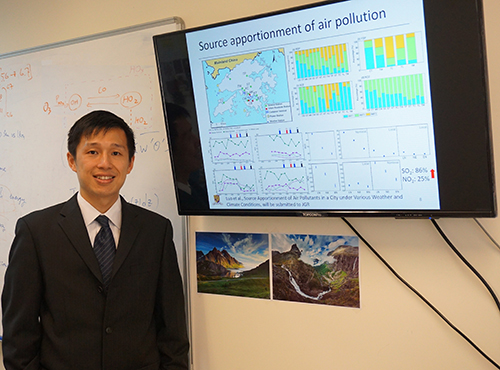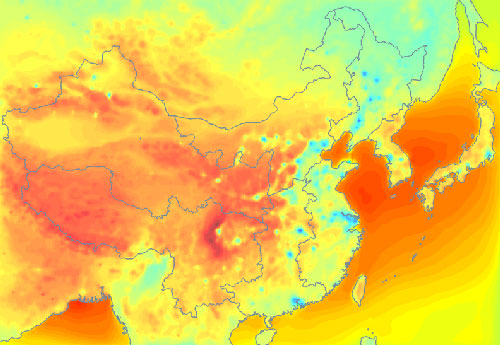Effects of Climate Conditions and Anthropogenic Emissions on Ozone Concentration
 Professor Yim Hung-lam, Steve is an Assistant Professor in the Department of Geography and Resources Management at CUHK.
Professor Yim Hung-lam, Steve is an Assistant Professor in the Department of Geography and Resources Management at CUHK.
Ozone exposure is a particular public-health problem for cities such as Hong Kong. According to Professor Yim Hung-lam Steve from CUHK’s Department of Geography and Resources Management, ground-level pollution is harmful to our health and even leads to diseases such as lung injuries and even premature deaths. Solving the problem of ozone pollution is therefore critical to our environment and public health.
The “ozone hole” most prevalent in the southern hemisphere leaves people at a greater risk of skin cancer. Our secondary-school teachers taught us that the ozone layer protects us and our planet from harmful ultraviolet radiation. The ozone refers to the one in the stratosphere which is at between 10km and 50km above ground. For this kind of ozone, we can refer to it as “Good Ozone”.
However, ozone at ground level is what we can consider “Bad Ozone.” An exposure to ground-level ozone can trigger health problems, such as asthma and bronchitis, and even non-accidental daily deaths.

Ground-level ozone pollution hits home in Hong Kong in particular. For example, the maximum eight-hour average ozone concentration in Tung Chung in 2015 was 142% higher than the air quality standard of 100µg/m3 set by the World Health Organization. The records also exceeded the concentration level (160µg/m3) set in the government’s air-quality objectives by 19 times.
Professor Yim has collaborated with the Massachusetts Institute of Technology (MIT) in the United States and Cambridge University in the United Kingdom to quantify the contribution of various emission sources in terms of ground-level ozone and particulate matters. Professor Yim’s research aims to enhance our understanding of ozone formation and to formulate corresponding mitigation measures to tackle regional and urban air pollution, especially when we also consider the influence of climate change.
One study in particular looked at improving the air quality in London. The research estimated the effects of a variety of emission-reduction devices installed on London’s famous buses and analyzed which bus technologies worked the best to mitigate air quality problems. Researchers found that some well-intended efforts to tackle emissions may reduce primary pollutants, but they at the same time increase ground-level ozone concentration due to the nonlinear chemical reactions in the atmosphere. This finding highlights the challenges of mitigating ozone pollution.
Professor Yim recently published his study in an international journal about the air quality and health impacts of global aviation emissions, which has implications to the discussion of the third runway project at the Hong Kong International Airport. His study estimated that 2,100 (90% CI: 1,000–3,300) premature deaths per year are caused by aviation emissions worldwide. The ozone exposure accounts for 12% of total premature deaths due to aviation emissions. This highlights that our third runway project should not consider aviation emissions from landing and takeoff operations alone.
Professor Yim’s ongoing research is to adopt a dynamic downscaling approach combined with state-of-the-art atmospheric models to study the sensitivity of ozone to various emissions and the interactions between climate and air quality in the Pearl River Delta. His research should provide critical reference for atmospheric scientists and policy makers to mitigate ozone pollution. We hope his research can identify effective policies, providing us a breath of fresh air.
by Alex Frew McMillan






